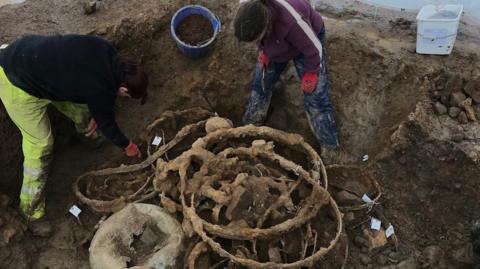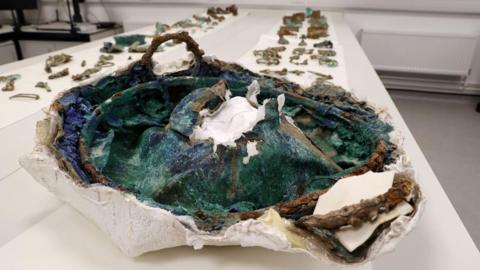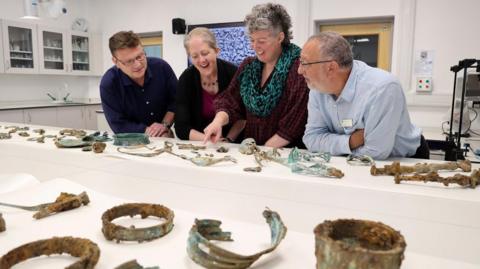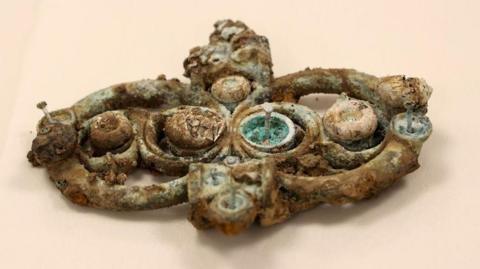Archaeologists have helped uncover one of the "largest and most important" Iron Age finds in the UK.
The Melsonby Hoard was discovered in a field near Melsonby, North Yorkshire, by metal detectorist Peter Heads and excavated with the help of Durham University.
It includes more than 800 items, including two cauldrons or vessels, horse harness, bridle bits, ceremonial spears and 28 iron tyres, believed to have been buried about 2,000 years ago.
Historians believe the "unprecedented" find could lead to a "major re-evaluation" of the wealth and status of the elite living in northern Britain at the time.




